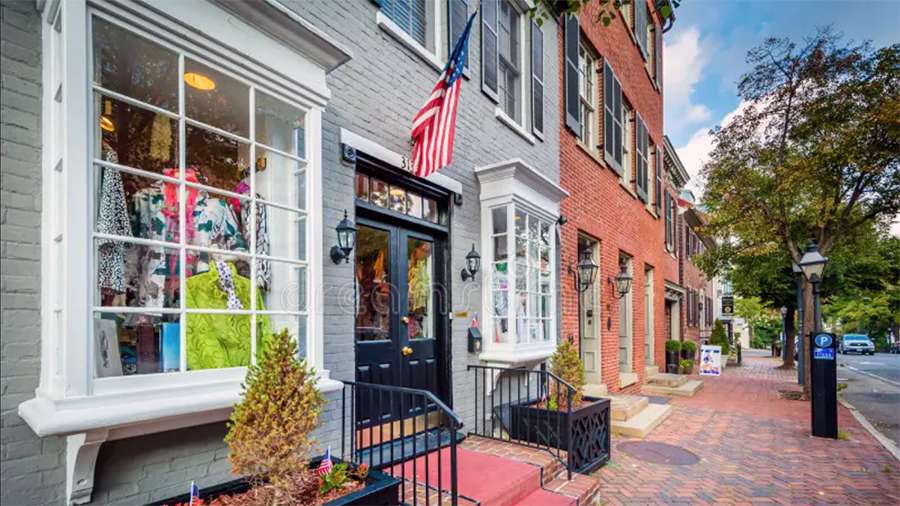A new Lending Tree survey found that 65 percent of U.S. adults would shop locally more often, but cost, convenience and product selection usually cause them to take their dollars elsewhere.
The online survey of 2,000 U.S. adults, taken from August 12-14, 2024, found that a 90 percent of respondents believe shopping locally positively impacts the quality of their life.
Among the respondents, 92 percent shop locally at least monthly. Breaking down that percentage, 57 percent shop locally and weekly, 20 percent monthly, and 15 percent daily. Only 2 percent of respondents said they never shop locally, with the remaining 6 percent only several times a year.
When asked by Lending Tree which local businesses respondents would commonly use, 78 percent said grocers or farmers’ markets, 60 percent said restaurants or cafes, and 48 percent said clothing stores. Overall, 70 percent of respondents said they try to source food locally.
The survey also found that younger generations shop locally slightly more than older generations. Nearly one in four (24 percent) of Gen Z (ages 18 to 27) reported shopping locally daily, followed by 19 percent of Millennials (ages 28 to 43), 12 percent of Gen X (ages 44 to 59), and 5 percent of Baby Boomers (ages 60 to 78). Men are more likely to shop locally daily than women at 18 percent versus 11 percent.
Barriers to Shopping Local
When asked what’s keeping them from shopping locally more often, 57 percent of respondents said cost, 42 percent said convenience and 39 percent said product selection. Ranking lower among roadblocks to shopping locally were product quality, 26 percent; customer service, 16 percent; and environmental factors, 14 percent.
When Lending Tree asked which factors are important when determining where to spend their money, 81 percent of respondents said price, followed by convenience, 67 percent, and product availability, product quality, and product selection, each selected by 54 percent of respondents. Only 14 percent said supporting their local community is an important factor.
Even though price matters, 50 percent of respondents said they would spend more to support local businesses, with men more willing than women, 56 percent versus 44 percent. The youngest generations were more willing than their older counterparts — 57 percent of Millennials and 56 percent of Gen Z, versus 44 percent of Gen X and 42 percent of Baby Boomers.
Those who earn $100,000 or more annually Lending Tree found the demographic o be less willing to spend more to support locally owned businesses than those who make under $30,000 a year—38 percent versus 57 percent.
Among the respondents, 80 percent said inflation makes it more difficult to shop locally, and 75 percent would if they could afford to support locally-owned businesses more often.
In Lending Tree’s survey, women responded more strongly about inflation pressures than men, 83 percent versus 78 percent, while baby boomers (74 percent) felt it less strongly than their younger counterparts, with Gen Z (81 percent), Millennials (83 percent) and Gen X (83 percent).
Among respondents, 75 percent said they wish they could afford to shop locally more than they do. Those with kids under 18 feel this way the most, 82 percent, compared to 72 percent of those with kids 18 or older and 71 percent with no kids. More women than men said they wish they could afford to (77 percent versus 73 percent).
Guilt Around Shopping Online
The survey found that while 71 percent of respondents order from Amazon or other non-local online retailers that offer convenience and often lower prices than locally owned retailers, 31 percent said they feel guilty when they do. Among generations, Gen Z feels the most guilt (45 percent, compared with 20 percent of Baby Boomers). Men feel slightly more guilty than women — 33 percent versus 29 percent, respectively. However, among the 29 percent who said they are morally opposed to shopping at Amazon, 85 percent do.
Those with the highest household incomes feel more guilty about shopping online than those who make the least. Forty percent of those who make $100,000 or more a year said it weighed on their conscience, versus 24 percent of those who make under $30,000. Those with kids under 18 (39 percent) are more likely to feel guilty than those with kids 18 or older (21 percent) or those with no kids (30 percent).
“People feel guilty because they know that many small, local businesses have struggled to compete with Amazon and the onslaught of online retailers,” said Matt Schulz, LendingTree’s chief credit analyst. “They value small businesses and know how important a part of the community they are, but shoppers also feel conflicted because they’re struggling, too. Their financial wiggle room is tiny, making them very price-conscious.”
Lending Tree’s survey also found locally owned stores compete for foot traffic against big-box retailers, with 76 percent of consumers shopping at least monthly.
Less than half of Americans (43 percent) consider the environmental impacts of shopping online. Younger generations consider the eco-impact more than older generations, with 53 percent of Gen Z and 50 percent of Millennials, versus 38 percent of Gen X and 30 percent of Baby Boomers. Also, those with kids under 18 are more likely to consider the environmental impacts of shopping online (55 percent) than those with kids 18 or older (33 percent) or those with no kids (39 percent).
















